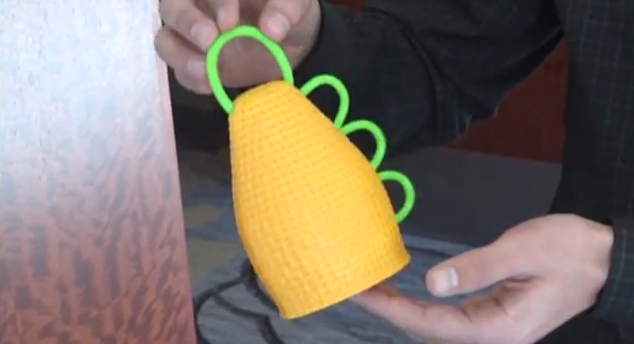
We all remember the vuvuzela, the noisy instruments used at the 2010 World Cup in South Africa. A long plastic horn that produced a noise that, according to doctors, could result in noise-induced hearing loss. So Brazil, the home of the 2014 World Cup, stepped up to create a new instrument that makes sound pressure levels similar to normal conversations. The name? Caxirola. Researchers from the Federal University of Santa Maria in Brazil presented their findings to the Acoustic Society of America in San Francisco on Thursday. RELATED: World Cup 2014 News: Brazil's Caxirola To Replace Vuvuzela
"The caxirola is not so dangerous as the vuvuzela for the people who are going to be in the stadiums," said Bernardo Murta, one of the researchers. We might remember almost four years ago that while watching some of the World Cup matches on TV all we could hear was a roaring noise and at first we thought there were reception problems. Even the players couldn't communicate with each other over the noise. That was all the result of fans in the stadium playing vuvuzelas. Hopefully, with the new caxirola these issues will be resolved. Here we've gathered five things to know about the new World Cup noisemaker!
- 1) Brazilian musician Carlinhos Brown designed the caxirola, a new maraca-like instrument for the soccer tournament.
- -
- 2) The caxirola was inspired in an African and South American instrument called the caxixi, which is traditionally made from a tightly woven basket lined with a flat bottom made from dried gourd, and filled with seeds. The noise comes from shaking the caxixi such that the seeds strike that flat bottom.
- -
- 3) Although some modern caxixis are made with metal, the caxirola is made with "green and sustainable" plastic, Brown says. "We have to be responsible."
- -
- 4) The caxixi is used in capoeira, a Brazilian martial art that combines dance, and also in samba, which is the most popular Brazilian dance. So having the caxirola as the instrument of the 2014 World Cup held in Brazil, is staying true to the identity of the country.
- -
- 5) The caxirola's rattle is 45 decibels lower than the vuvuzela, which corresponds to a sound energy of about 1/30,000th that of the honking plastic horn. It would wake about 2,000 caxirolas to emit the same noise as a vuvuzela.
© 2025 Latin Times. All rights reserved. Do not reproduce without permission.





